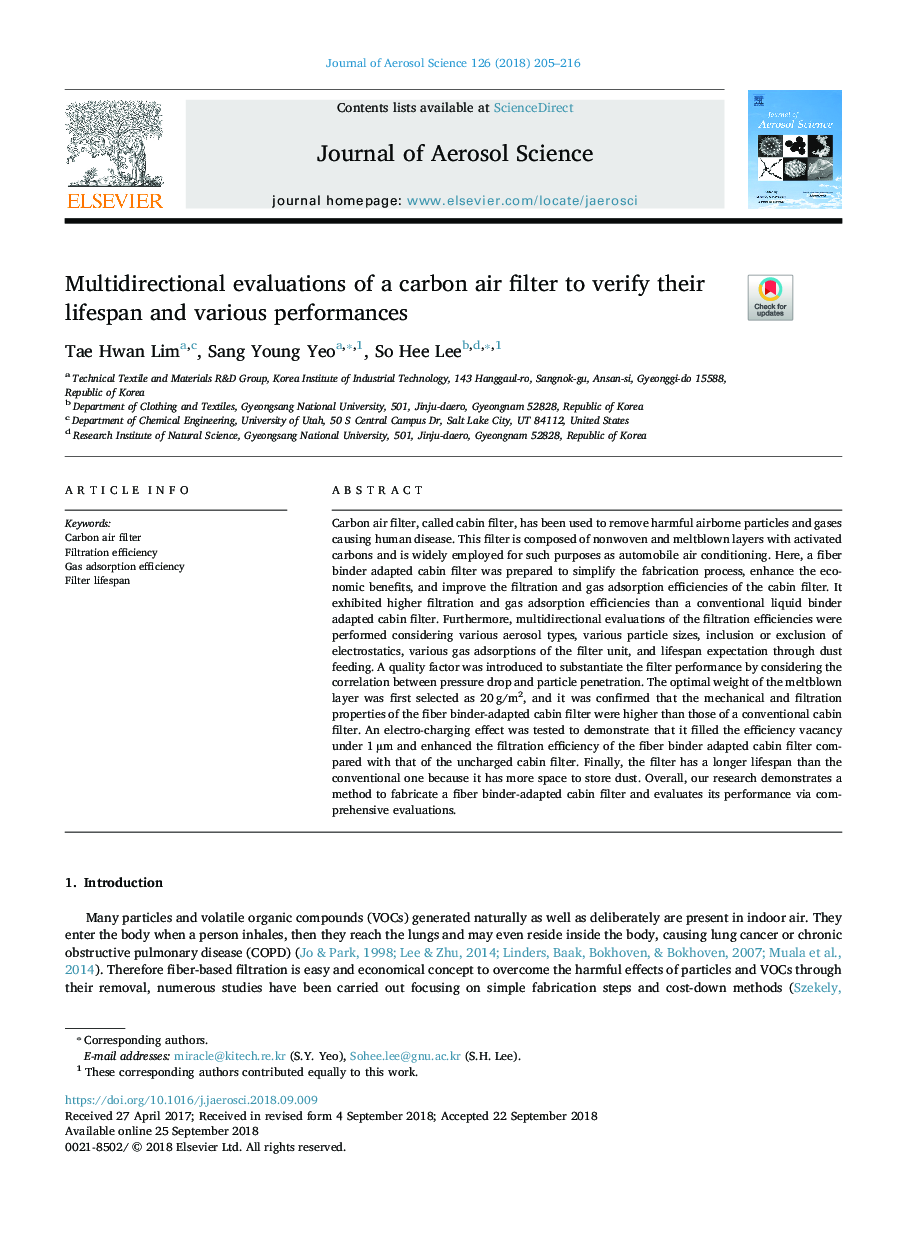| Article ID | Journal | Published Year | Pages | File Type |
|---|---|---|---|---|
| 11032642 | Journal of Aerosol Science | 2018 | 12 Pages |
Abstract
Carbon air filter, called cabin filter, has been used to remove harmful airborne particles and gases causing human disease. This filter is composed of nonwoven and meltblown layers with activated carbons and is widely employed for such purposes as automobile air conditioning. Here, a fiber binder adapted cabin filter was prepared to simplify the fabrication process, enhance the economic benefits, and improve the filtration and gas adsorption efficiencies of the cabin filter. It exhibited higher filtration and gas adsorption efficiencies than a conventional liquid binder adapted cabin filter. Furthermore, multidirectional evaluations of the filtration efficiencies were performed considering various aerosol types, various particle sizes, inclusion or exclusion of electrostatics, various gas adsorptions of the filter unit, and lifespan expectation through dust feeding. A quality factor was introduced to substantiate the filter performance by considering the correlation between pressure drop and particle penetration. The optimal weight of the meltblown layer was first selected as 20â¯g/m2, and it was confirmed that the mechanical and filtration properties of the fiber binder-adapted cabin filter were higher than those of a conventional cabin filter. An electro-charging effect was tested to demonstrate that it filled the efficiency vacancy under 1â¯Âµm and enhanced the filtration efficiency of the fiber binder adapted cabin filter compared with that of the uncharged cabin filter. Finally, the filter has a longer lifespan than the conventional one because it has more space to store dust. Overall, our research demonstrates a method to fabricate a fiber binder-adapted cabin filter and evaluates its performance via comprehensive evaluations.
Keywords
Related Topics
Physical Sciences and Engineering
Earth and Planetary Sciences
Atmospheric Science
Authors
Tae Hwan Lim, Sang Young Yeo, So Hee Lee,
